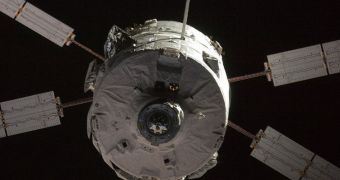Officials at ESA and JAXA announced recently that they are considering plans to upgrade their existing unmanned space capsules, the ATV and HTV, with the ability to return things to Earth.
In other words, the two agencies are looking forward towards designing and implementing measures that would ensure their spacecrafts become able to survive the fierce conditions of atmospheric reentry.
The European Space Agency (ESA) has been operating a vehicle called the ATV (Automated Transfer Vehicle), one of which was already launched and successfully docked to the ISS.
The Japan Aerospace Exploration Agency has last year demonstrated the H-2 Transfer Vehicle (HTV), which is also capable of docking to the International Space Station.
The main idea behind the new proposals is to have the bleak, unmanned spacecrafts converted into equipment that could ensure the retrieval of objects and experiments from the orbital facility.
The agencies also believe that this will help them develop the unmanned vehicles into manned space capsules by around 2020, Space reports.
At this point, the faith of ISS resupply ships is pretty straightforward. After astronauts aboard the orbital lab unload the precious cargo these capsules ferry up, they load them with thrash and other residues.
The hatch between it and the ISS is then closed, the capsule ejected, and left to burn into the Earth's atmosphere. Currently, the Progress 38 capsule is about to suffer the same faith.
It separated from the station a couple of days ago, and is currently being prepared to begin atmospheric reentry and burn-up. This is scheduled to take place September 6.
At this point, ESA is about to conclude an 18-month Phase A study of the proposal. After this is completed, engineers at the agency can move ahead with Phase B.
The latter is meant to set the stage for the actual construction, design and review processes, that would see the spacecraft being built by 2020.
“What I would like to do is to put on the table the Phase B approval at the end of this year,” told Spaceflight Now the director of the ESA Human Spaceflight Program, Simonetta Di Pippo.
On the other hand, officials at JAXA are looking to develop their advanced space capsule even earlier. They say that the spacecraft could be finished by 2016.

 14 DAY TRIAL //
14 DAY TRIAL //